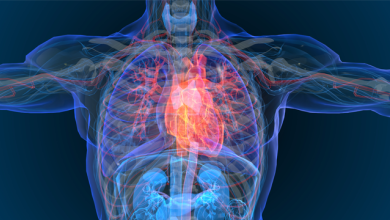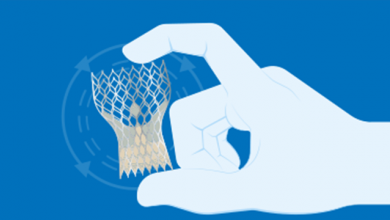Search results
Author(s):
John M Miller
Added:
3 years ago
The Electrocardiogram
In the entire realm of his work, Dr Josephson’s greatest love was the simple electrocardiogram (ECG). His discernment, based on the ECG, into the patient’s history and disease processes was legendary. Among the more important and insightful contributions he made to our understanding of heart disease and arrhythmias from the ECG are: observations of alternating preexcitation…
View more
Author(s):
Maarten Antonius Koole
,
Sanne de Jong
,
Barbara J Mulder
,
et al
Added:
1 week ago
Author(s):
Steven Back
,
Peter R Kowey
Added:
3 years ago
Ventricular arrhythmias are a therapeutic challenge. They occur frequently in clinical practice, are found in patients with and without structural heart disease, and most importantly, are unpredictable and potentially deadly. Patients with a history of sustained ventricular tachycardia (VT) and VF or those at high risk for such arrhythmias, may require an ICD to prevent sudden cardiac arrest…
View more
Added:
6 years ago
Author(s):
Nabil El-Sherif
,
Gioia Turitto
,
Mohamed Boutjdir
Added:
3 years ago
Since its initial description by Jervell and Lange-Nielsen in 1957,1 congenital long QT syndrome (LQTS) has been the most investigated cardiac ion channelopathy. A prolonged QT interval on the surface ECG is a surrogate measure of prolonged ventricular action potential duration (APD).
Congenital as well as acquired alterations in certain cardiac ion channels can affect their currents in such a…
View more
Author(s):
Serge Sicouri
,
Charles Antzelevitch
Added:
3 years ago
The link between sudden unexplained death in individuals with mental health problems who are administered antipsychotic drugs has been recognised for over a century.1 A clear relationship has emerged over the past 25 years between antipsychotic drugs, prolongation of the QT interval of the ECG, atypical polymorphic tachycardia known as torsade de pointes (TdP) and sudden cardiac death (SCD). A…
View more
Author(s):
Abhishek Maan
,
Moussa Mansour
,
Jeremy N Ruskin
,
et al
Added:
3 years ago
Atrial fibrillation (AF) is the most common cardiac arrhythmia encountered in clinical practice.1 It has been estimated that >3million people in the US and >4.5 million in the EU have paroxysmal or persistent AF.2–4 AF is associated with an approximately fivefold increased risk of stroke,5 threefold risk of heart failure,6 diminished quality of life7 and increased healthcare costs.8,9…
View more
EPS in TAVI Patients
Author(s):
Oholi Tovia-Brodie
,
Yoav Michowitz
,
Bernard Belhassen
Added:
3 years ago
Article
Author(s):
Stavros Stavrakis
,
Sunny Po
Added:
3 years ago
There are numerous conglomerations of autonomic ganglia on the epicardial surface of the heart, known as ganglionated plexi (GP). These GP have been shown to play a significant role in different arrhythmias, including AF. As such, GP ablation has become an adjunctive procedure in the treatment of AF. This review will present the current data on the significance of GP in arrhythmogenesis and will…
View more
Author(s):
Satish Raj
,
Robert Sheldon
Added:
3 years ago
Syncope and palpitations are two common clinical presentations, and both pose difficulties in the approach to their management. They are both symptoms of a number of syndromes, and an efficient approach with targeted therapy is challenging. Cardiac arrhythmia specialists, who lack a compact and accessible guide to management, see many patients with these symptoms in consultation. Recognising this…
View more













 « First
« First